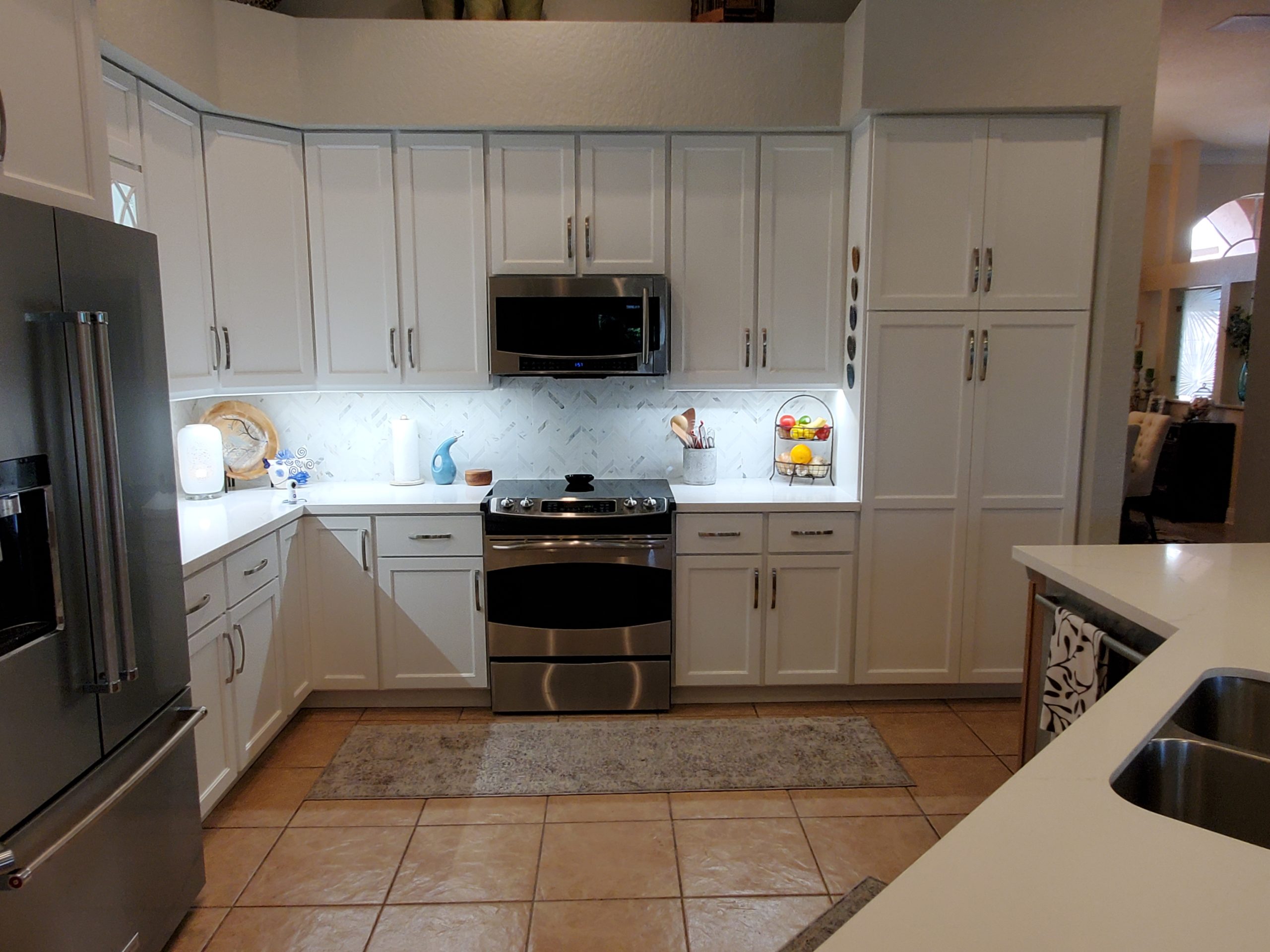Kitchen Layouts and Design Concepts

 Being the focal point of any household comes with additional responsibilities and functionalities. The kitchen is more than just a space to cook and prepare meals. Serving as the center of communication, the kitchen is a prime place to entertain friends and family. Hosting guests often translates to crowded kitchens and lots of foot traffic. Optimizing all of your given space will ensure easy navigation and top convenience. Below we have highlighted some of the main points to consider when designing your kitchen layout.
Being the focal point of any household comes with additional responsibilities and functionalities. The kitchen is more than just a space to cook and prepare meals. Serving as the center of communication, the kitchen is a prime place to entertain friends and family. Hosting guests often translates to crowded kitchens and lots of foot traffic. Optimizing all of your given space will ensure easy navigation and top convenience. Below we have highlighted some of the main points to consider when designing your kitchen layout.
Before getting into specific layouts, we wanted to touch on design concepts that will make your kitchens most accessible, utilize common space, be child friendly, and control traffic.
- The working triangle is essential to most kitchens. The three points of the triangle are the refrigerator, sink, and stove. This is a common starting point for most kitchens because spacing out these three appliances provides maximum efficiency and productivity.
- Another design concept is organizing your kitchen into task zones, areas where you can perform a group of related activities. Common zones are often washing, breakfast, preparing, cooking, and cleaning. The zones feature items and appliances that work together to accomplish similar tasks. For example, the washing zone would have your dishwasher and storage while the breakfast zone would have the coffeemaker and toaster. The preparation zone would house utensils, chopping boards, and other appliances with similar natures. The cooking zone is where the stove and pots/pans would be found, and finally, the cleaning area is where the sink would be.
- Kitchen design and controlling accessibility go hand-in-hand. When controlling traffic, a homeowner needs to focus on keeping the children safe and the guests out of the way. Putting the fridge and the pantry, parts of the kitchen kids are most interested in, on the ends of the area make it most accessible. While the stove and other appliances can be placed near the center. This way, when the kids want a snack, they won’t be in your way and won’t get close to dangerous appliances. Controlling adults is much easier. Installing an island creates space and is also a great divider. On side can be equipped with stools or chairs for your guests to sit in while the other side can be dedicated to meal preparation. An island keeps them at distance while simultaneously making them feel included.
- When setting up appliances and sections of your kitchen there’s a lot to keep in mind. Each appliance and section have traits that work together with the rest of the kitchen, but most also have their own unique requirements. For instance, stoves and ovens should be placed on an exterior wall for easy ventilation. Placing these appliances over an island or in the middle of the kitchen provides poor ventilation, is expensive, and unnecessarily complicated. Islands must also be strategically placed. A homeowner does not want an island too far from the kitchen where it’s a hassle to get to but does not want it too close either where it blocks passageways.
Now that we have touched on design concepts lets jump into common kitchen layouts!
L-Shaped
This layout has become increasingly popular because it offers a very open feel to the kitchen. The L-shaped kitchen has two walls which intersect at a 90-degree angle that feature all of the appliances. Often times one of the walls is longer than the other to keep space open. Keep in mind working in the kitchen causes you to have your back to the rest of the house, so installing an island can help you prep meals and face people.
U-Shaped
This layout contains three walls connected in a square shape and follows suit to the triangle design mentioned above. The U-shaped plan generally works best for kitchens separated from the rest of the house. Although not the best space to entertain company, these kitchens are great for cooking in.
G-Shaped
The G-shape kitchens are entirely closed off with one point of access. In this space there’s an abundance of counter space perfect for adding stools or chairs. Homeowners can also install a peninsula to create more gathering space.
Galley
Similar to a U-shaped kitchen without the third connecting wall, a galley layout has two perpendicular walls. Often times one of the entrances either leads to another room (i.e. laundry room) or is closed off. Although this design can make cooks feel isolated, it’s very efficient and allows for the important appliances to be close together. Putting windows in can also make the space appear more open as well.
One Wall
Most commonly seen in smaller properties, a one-wall kitchen has the appliances and counter space all together. Having one wall allows for easy accessibility but offers limited space. To increase available space, we suggest adding an island or a portable cart to the area.
Design Your Layout With Kitchen Solvers
Remodels can be demanding and overwhelming. At Kitchen Solvers, we want to give our customers their dream kitchen without the unnecessary stress. Part of our mission is to ensure each homeowner has a Pleasant Remodeling Experience. No matter how much or how little help you need, our team is always happy to aid you on your journey to the cooking space of your dreams.
Back
